Alexander Rossi is an IndyCar driver for Andretti Autosport. He drives the number 27 NAPA AutoNation Honda and won the 2016 Indy 500
Alexander Rossi: The tires are kind of at their temperature peak exiting Turn 1 and Turn 3, so when you go into 2 and 4 there's much less of a margin for error.
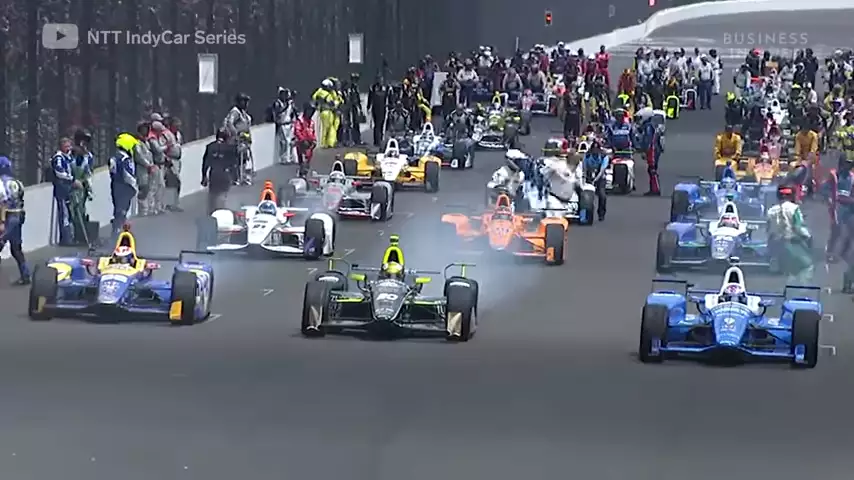 Where we're gonna start this of coming to the green flag. So you roll off on the beginning of what is four kind of pace and parade laps. So the first one, you kinda do a salute to the fans. So the first lap is very slow and you're kinda just waving to the fans.
Where we're gonna start this of coming to the green flag. So you roll off on the beginning of what is four kind of pace and parade laps. So the first one, you kinda do a salute to the fans. So the first lap is very slow and you're kinda just waving to the fans.
And then the second and third lap you go single file and that's when you get the engine temperature, the tire temperature, the brake temperature all to the levels that you want. And the team's kind of talking you through that. And then your final lap, you form back into the grid formation, eleven rows of three. You know, what you're trying to do is kinda just maintain the speed off the car to your inside because he's really the one setting the pace. And then from that point, you're just waiting until the row in front of you accelerates, and you try and go with them.
You know, you want to be able get a jump on the cars around you, but ultimately, it's a 500 mile race and there's so much that's gonna happen throughout the next kinda three and a half hours that the last thing you want to do is throw it all away into Turn 1. As we're going into Turn 1, this is the first time that you're actually seeing the grandstands full and because of that, it looks a lot narrower than it's looked for all the previous two weeks that you've been practicing because the light's not coming in, there's different kind of shadows and reflections that you see. So it's actually kind of intimidating the first time that you go through there 'cause you're like, "Oh, is it different?" Obviously it's not. But it takes your mind kinda three or four laps to actually adjust to the visual sensation.
So going into Turn 1, there's cars that are taking a bigger risk than other cars, for sure. Going two wide or three wide through Turn 1, you can only do on starts and restarts. 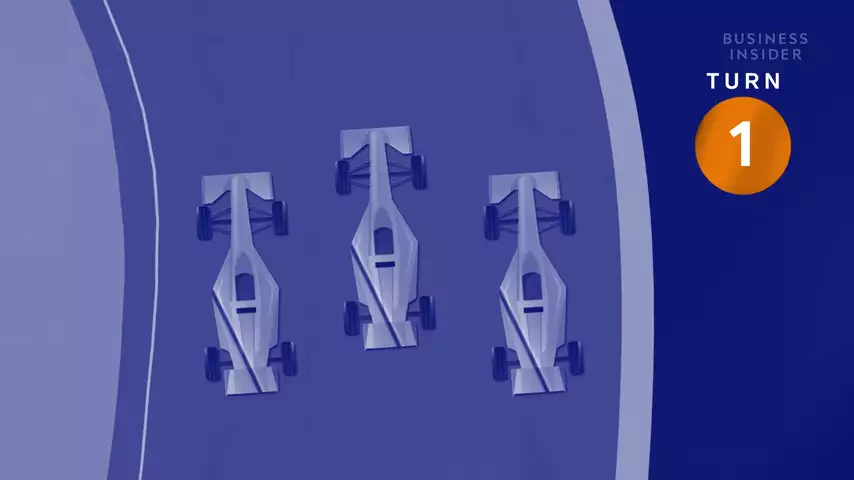 And the reason for that is 'cause you're accelerating from such a slower speed out of Turn 4, that by the time you get to Turn 1, you're only doing 180, 190 mph (305.78 km/h). While that's still fast, it's a lot different than approaching Turn 1 at 240 mph (386.24 km/h). So your margin for being able to explore different lines really exists only on starts and restarts, and then from there you kind of see it fall into more single file type racing.
And the reason for that is 'cause you're accelerating from such a slower speed out of Turn 4, that by the time you get to Turn 1, you're only doing 180, 190 mph (305.78 km/h). While that's still fast, it's a lot different than approaching Turn 1 at 240 mph (386.24 km/h). So your margin for being able to explore different lines really exists only on starts and restarts, and then from there you kind of see it fall into more single file type racing.
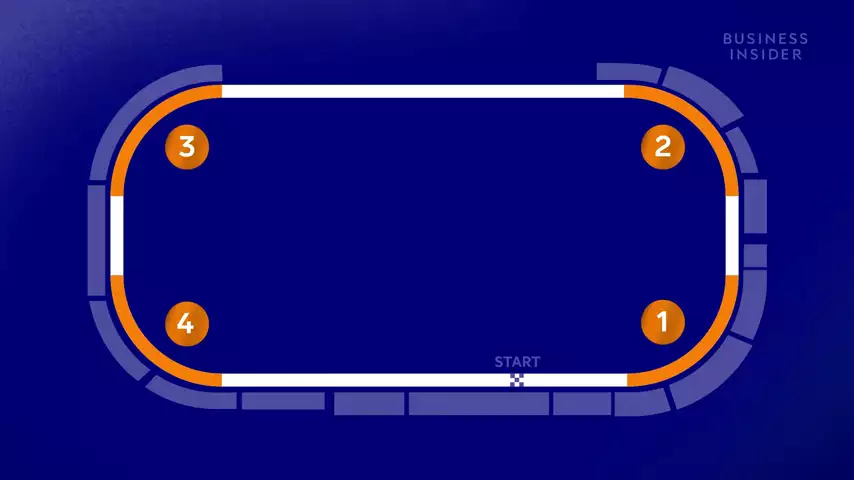 As much as geometrically, Turns 1, 2, 3 and 4 are identical, they're all very different. You're using the short chutes to really change the balance based on how it was through Turn 1 that lap. The normal kind of balance is you have a bit of understeer exit of 1 and understeer into 2.
As much as geometrically, Turns 1, 2, 3 and 4 are identical, they're all very different. You're using the short chutes to really change the balance based on how it was through Turn 1 that lap. The normal kind of balance is you have a bit of understeer exit of 1 and understeer into 2.
Between the short chute of 1 and 2, you are usually stiffening your rear bar, your rear anti-roll bar, softening your front anti-roll bar, or putting left front weight. So you can change the cross weight of the car. So you can move up to 150 pounds (68.04 kg) from the left front tire to the right front tire, which changes the balance obviously quite a bit.
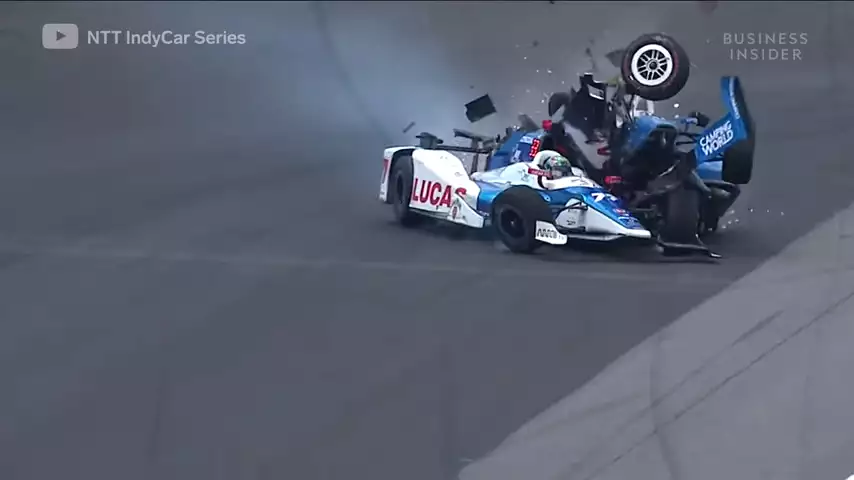 So in terms of the easiest places to crash, I mean it's really different for each driver. It's usually Turns 2 or 4.
So in terms of the easiest places to crash, I mean it's really different for each driver. It's usually Turns 2 or 4.
The tires are kind of at their temperature peak exiting Turn 1 and Turn 3, so when you go into 2 and 4, there's much less of a margin for error. 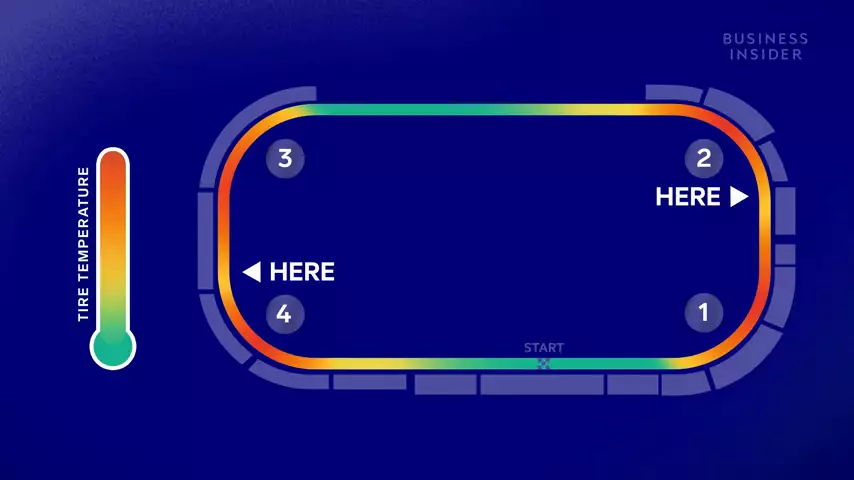 Whereas when you're entering 1 and 3, they have the entire straightaway to cool down and kind of recenter themselves. Whereas the short chutes between 1 and 2, and 3 and 4, don't allow the tires really to cool down enough so you have to be super precise with what you do or the penalty is kinda just exponentially bigger.
Whereas when you're entering 1 and 3, they have the entire straightaway to cool down and kind of recenter themselves. Whereas the short chutes between 1 and 2, and 3 and 4, don't allow the tires really to cool down enough so you have to be super precise with what you do or the penalty is kinda just exponentially bigger.
These cars are so aerodynamically dependent, and they're made to be run by themselves. So what that means is when the wings and the floor of the car are developed, they're made in a space where the air coming at it is clean, meaning it's unobstructed and the car's going through it as if it was brand new virgin air. Well, when you're behind cars that are going through that air, they're actually dirtying up the air and it's coming at the car in a much more disconnected fashion so it actually reduces the performance of your car.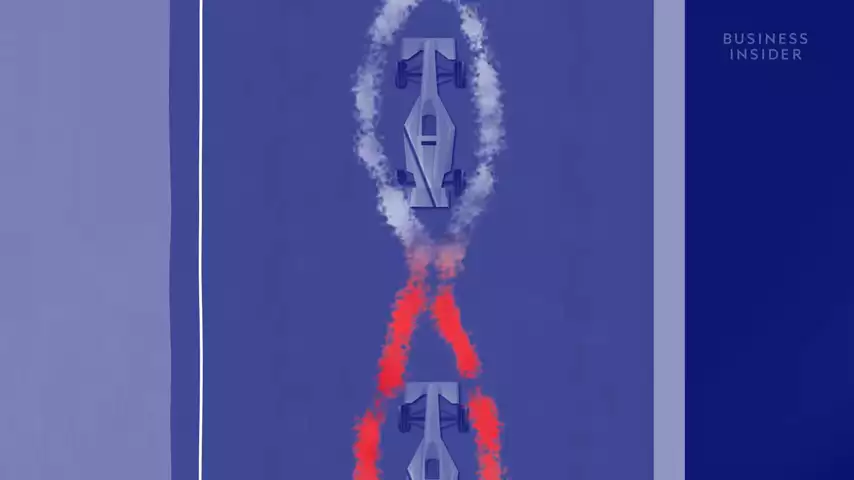 Where this comes back to your advantage is in the straights. So because they're having to basically punch a hole through clean air, that means that you don't have to do that anymore, so that's where the draft and slipstream comes into play. So the main goal of winning Indianapolis is: How do you find a car balance that you can stay close enough behind the car in front of you to not lose a draft, but then still fast enough in a straight line to be able to pass them. Because you can obviously put downforce on, raise the rear wing angle, and really glue your car to the ground and be able to corner really well and follow someone super close. But then when you're in a straight and you try to slipstream past them you don't have enough straight line speed to be able to do that. So it's all about finding that kind of balance between "this is the least amount of grip I can get away with, while still being able to pass cars."
Where this comes back to your advantage is in the straights. So because they're having to basically punch a hole through clean air, that means that you don't have to do that anymore, so that's where the draft and slipstream comes into play. So the main goal of winning Indianapolis is: How do you find a car balance that you can stay close enough behind the car in front of you to not lose a draft, but then still fast enough in a straight line to be able to pass them. Because you can obviously put downforce on, raise the rear wing angle, and really glue your car to the ground and be able to corner really well and follow someone super close. But then when you're in a straight and you try to slipstream past them you don't have enough straight line speed to be able to do that. So it's all about finding that kind of balance between "this is the least amount of grip I can get away with, while still being able to pass cars."
So going into Turn 3, you can see the sparks from the car in front. 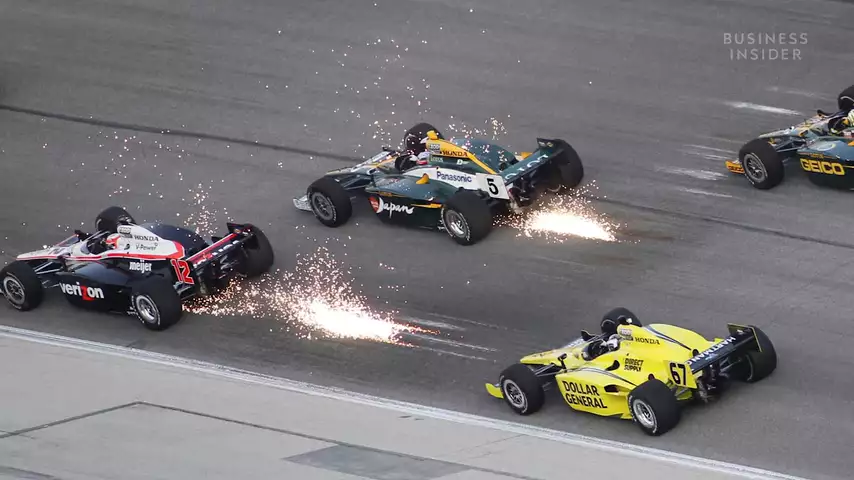 One thing to keep in mind in a race like this is that because it's so long, you know, the tire pressures are pretty low at the start of the stint. So what you have is the car bottom actually touches the ground and we call that bottoming.
One thing to keep in mind in a race like this is that because it's so long, you know, the tire pressures are pretty low at the start of the stint. So what you have is the car bottom actually touches the ground and we call that bottoming.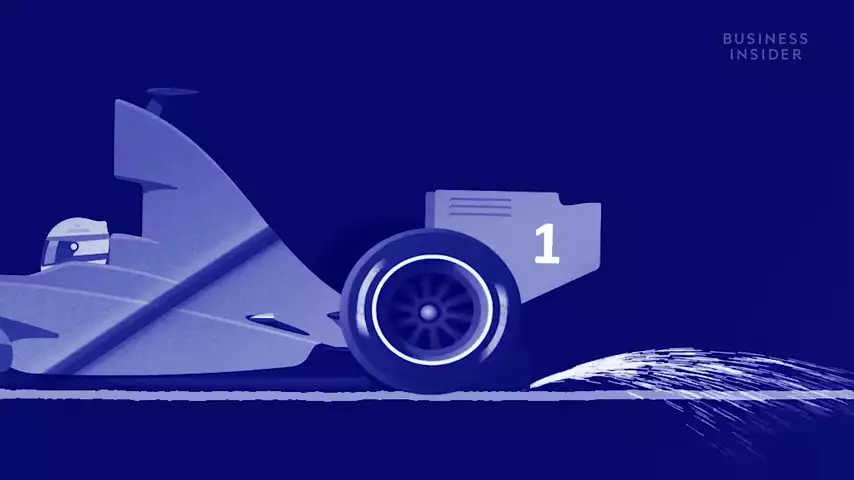 And so when that happens, there's less of a tire on the ground which is fine, but you have to be prepared for it because the car can actually move a little bit, and it's hitting the deck so it's not as composed as it would be.
And so when that happens, there's less of a tire on the ground which is fine, but you have to be prepared for it because the car can actually move a little bit, and it's hitting the deck so it's not as composed as it would be.
And then going into Turn 4, so as you're completing the lap, this is the first time you're able to actually get a balance check of what the car's doing. So that first lap, you're kind of really seeing, "Did I make the right call? Is everything kind of as I expected it to be?" And even if, you know, the first balance check that you do isn't quite what you were hoping for or expecting, there's enough pit stops and enough time throughout the race where you can tune on the car, and adjust tire pressures and wing angles, that theoretically if you play your cards right, by the end of the race you can dial in the car to be what you need it to be to win.
So as you start Lap 2, you know, it's at this point where you kind of have an idea of what the car is doing, and you start to analyze people's strengths and weaknesses, and start trying to understand your areas of attack as the day goes on. And quite honestly that changes every 5 to 10 laps, as your fuel load decreases, your car balance changes, and the temperatures are always fluctuating. Two to three degrees of track temperature can make a big difference on the balance of your car. And it's the guy that's able to stay on top of it the most and make the best calls and obviously have a good car underneath him that's ultimately able to win the Indianapolis 500.
The 2016 Indy 500 was my first 500. It was my second race ever on an oval. Throughout the race, we were having a lot of problems refueling the car. Every time I came into the pits, I'd fall back, I'd lose positions because we were taking long to put fuel in the car. My strategist and team owner, Bryan Herta, came up with a strategy, it was kind of like a high risk, just roll the dice, "why not," we're gonna try and do one less pit stop than everyone else and save fuel. So we're gonna try and just eliminate stopping one final time and stretch our fuel to make it to the end.
We always knew that we were gonna run out of fuel on the final lap, it was just gonna be a matter of when did we run out and would we have enough of a lead to be able to basically coast across the finish line. So we had enough fuel to get us all the way out of 2, through Turn 3, and as we were in the short chute between 3 and 4, we ran out of gas. So I just pulled the clutch in and just waited and literally just free-wheeled all the way from the middle of Turn 4, to the finish line. We started the lap with a 24-second lead and won by 3.8 seconds. Certainly a very strange way to win that race.
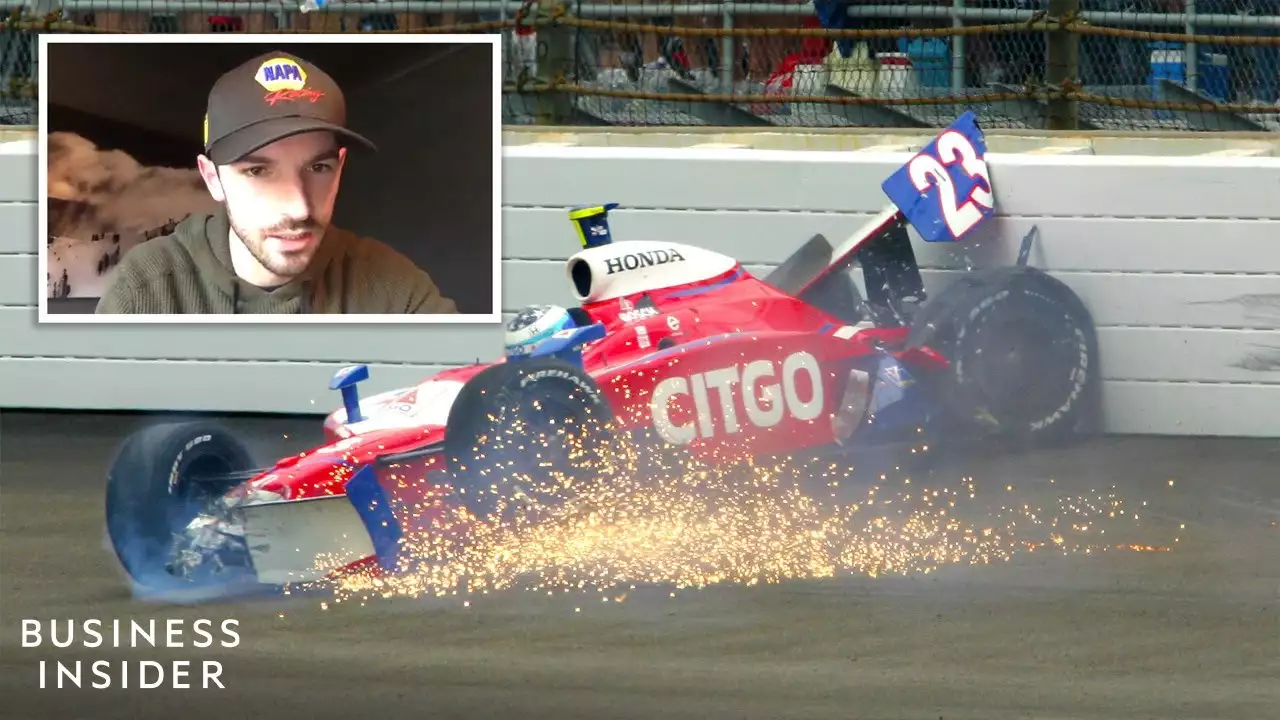

No comments yet